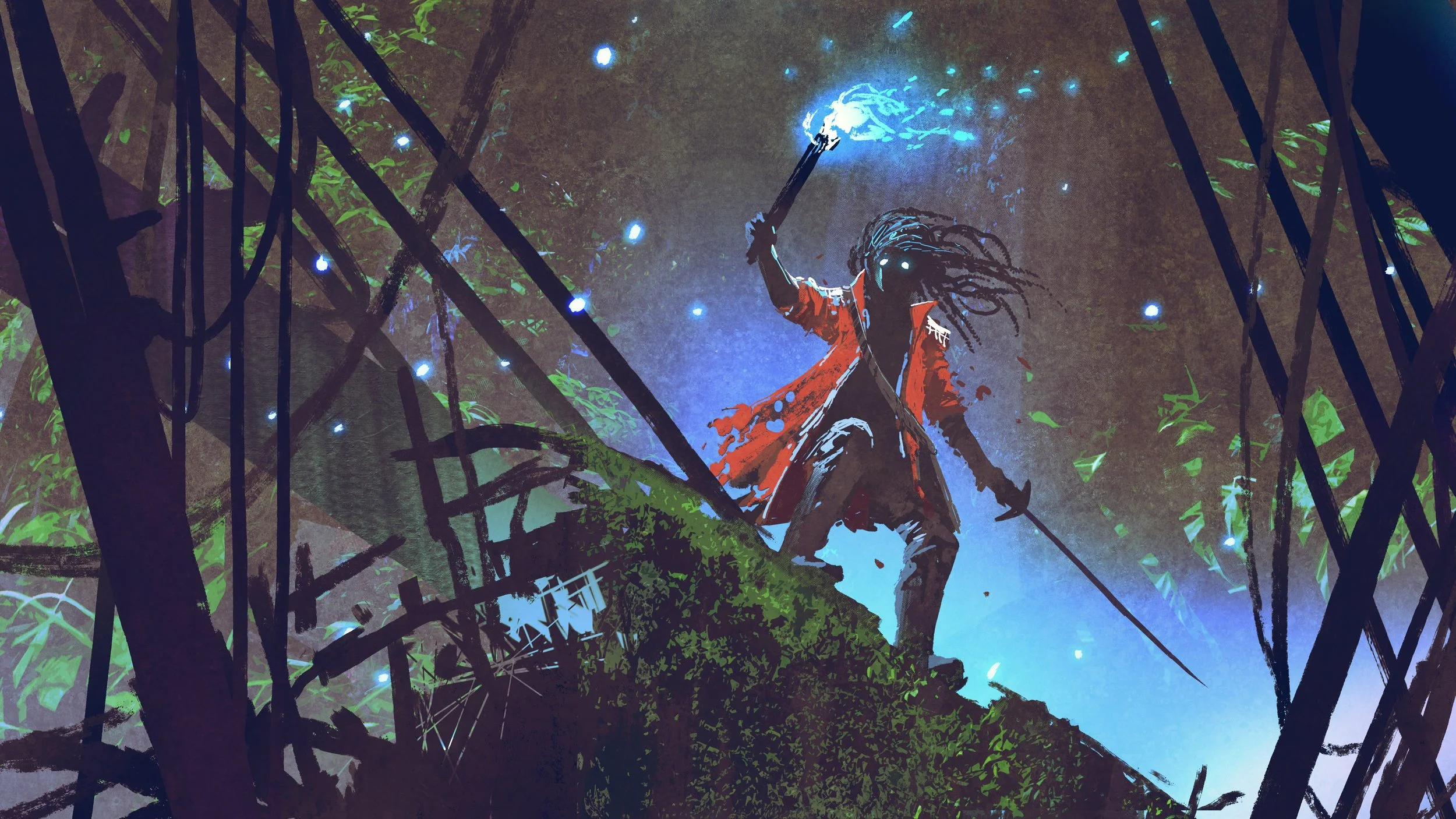What is Sword & Sorcery?
The first phase of the Chain Story Project focuses primarily on Sword and Sorcery fiction. Sword and Sorcery fiction is a subset of fantasy fiction characterized by more intimate stories that rely heavily on action and magick, conveying a sense of other-worldliness to the story. Many will trace its origins back to the works of Robert E. Howard, Clark Ashton Smith and C. L. Moore in the pages of Weird Tales magazine, while others will point out that Beowulf, the Odyssey, and many of the stories connected with folk heroes like Sinbad, Arthur and his Knights and others would qualify.
For a lot of scholars and readers there are a few more criteria that apply:
•The protagonist is an outsider—often styled a barbarian—who wins through every problem by the strength of his arm and the stoutness of his blade. (And, yes, for a select group of fans, the protagonist should be male, the early appearance of C. L. Moore’s Jirel of Joiry not withstanding.)
•The protagonist is motivated by a desire for gold, fame, sex or vengeance; and often acts to avenge themselvs against those who have violated their code of noble conduct.
•The antagonist is often a magick-user and evil, or has same in their employ. Sorcerers, necromancers, the undead and priests of many different sects often appear in this role. Evil gods also often motivate followers to commit unspeakable acts which offend the protagonist, triggering vengeance.
•Action and violence are key components. Many stories follow the solar hero motif: the protagonist descends into the underworld (often literally), slays the antagonist, and emerges the hero, ready for the next adventure. (If they are rewarded for their job, the reward is quickly spent, the relationship sours, and the protagonist moves on to that next adventure.)
•Magicks are very flashy and powerful. They are often transformative, with the antagonist or their agents commonly being transformed into another creature or revealing their “true self.” Changing into more bestial forms of themselves happens a lot; and having an antagonist change into a giant serpent is not at all unusual. (In fact, giant snakes show up a lot, along with sub-human creatures, giant spiders and a fair number of reanimated corpses or bare skeletons.)
One criteria that gets employed to the genre’s detriment is the idea that being a “barbarian” is synonymous with being stupid. The “dumb barbarian” archetype is insufficient to describe Conan—as well as is the “noble savage” stereotype. Those roles really didn’t apply even at the genre’s birth in the last century, and more modern iterations of S&S stories have brought in whole new ranks of protagonists who were never even in hailing distance of those descriptions.
For me personally, Robert E. Howard’s Conan has always been the wolf at the edge of the firelight. You’re never quite sure if he’s lurking out there because he’s thinking of devouring you; or he’s luring there in between you and even greater monsters further out in the howling darkness. There is always a sense of being an observer, being slightly removed from what’s going on until the time for thinking in past and only action is going to resolve the issues at hand.
I mention above that Sword and Sorcery stories tend to be intimate, by which I mean they tend to focus on one or two characters, not the broad sort of cast that carries a novel—especially the sprawling epic fantasies common today.. The conflicts are more personal, timeframes truncated. The stories don’t require a ton of introspection and growth on the part of the main character, but, despite often being episodic, they don’t prohibit it. This is one aspect of S&S I love: any epic fantasy series is chuck full of opportunities for Sword and Sorcery adventure stories—they’re really sidequests that can develop secondary characters in wonderful and fascinating ways. And a whole series of S&S adventures creates solid episodic novels which are delightful reads.
Sword and Sorcery really is a vibrant genre of fantasy fiction to which generation after generation of writers have brought their own creative energies. Some write in the style of the old masters, hewing closely to the straight forward Steel vs Magick paradigm. Others have come at it from divergent angles, weaving in aspect of non-European cultures or exploring characters who defy being classed as strictly combatants. (The advent of roleplaying games with their multiplicity of classes undoubtedly has strongly influenced this trend.)
Regardless of the main character’s motivation, the uncomplicated motif of “see a problem, handle a problem” makes the stories highly satisfying—especially when handling the problem is written with enthusiasm, skill and a lot of wonder. And the fact that many times the characters survive (or the world persists) for more stories endears these stories to readers, who are happy to come back for more.
